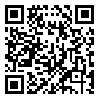Volume 13, Issue 48 (4-2013)
refahj 2013, 13(48): 171-199 |
Back to browse issues page
Download citation:
BibTeX | RIS | EndNote | Medlars | ProCite | Reference Manager | RefWorks
Send citation to:



BibTeX | RIS | EndNote | Medlars | ProCite | Reference Manager | RefWorks
Send citation to:
Fartookzadeh H, Moazzez H, Rajabi Nohouji M. (2013). Strategies and Policies of Drug Abuse Control in Iran. refahj. 13(48), 171-199.
URL: http://refahj.uswr.ac.ir/article-1-1251-en.html
URL: http://refahj.uswr.ac.ir/article-1-1251-en.html
Abstract: (6310 Views)
Introduction: Nowadays, direct or indirect impacts of drug abuse in many countries have imposed negative influences on them and are considered as an important social dilemma. Social, economic and even political destructive effects of drug abuse have caused extensive efforts dealing with this phenomenon. In last decades, vast costs and strict and severe course of actions have been unable, as much it is expected, to resolve the problem of drug abuse. Many experts believe that it must be viewed from other perspectives apart from what have been tried up to now.
Method: The approach of system dynamics analysis due to being able to analyze interactions among the parameters of complex systems can be considered as a more suitable approach to investigating the phenomenon of drug abuse.
Findings: Therefore, in this paper, adopting a system dynamics approach, capable of futurology, drug abuse has been modeled and stimulated in Vensim software. Then, various policies and strategies have been tested and ultimately a policy package has been suggested for managing the drug abuse problem.
Discussion: the Most important of these policies and strategies contains: establishing abusers homes, treatment and economic support from the abusers and their families, creating and providing healthy recreation and entertainment areas, platting less dangerous alternatives to drugs, promoting public attitudes and beliefs of individuals about drug abuse, economic and industrial partnerships with countries cultivating drugs, strengthening the abusers’ will to stop abuse and removing social disorders through improved economic and livelihoods conditions.
Keywords: : Computer Simulation, Drug abuse, Prevention Policies, System Dynamics Analysis, Trihedral Dynamic Model
Type of Study: orginal |
Received: 2013/12/14 | Accepted: 2013/12/14 | Published: 2013/12/14
Received: 2013/12/14 | Accepted: 2013/12/14 | Published: 2013/12/14
| Rights and permissions | |
 |
This work is licensed under a Creative Commons Attribution-NonCommercial 4.0 International License. |





